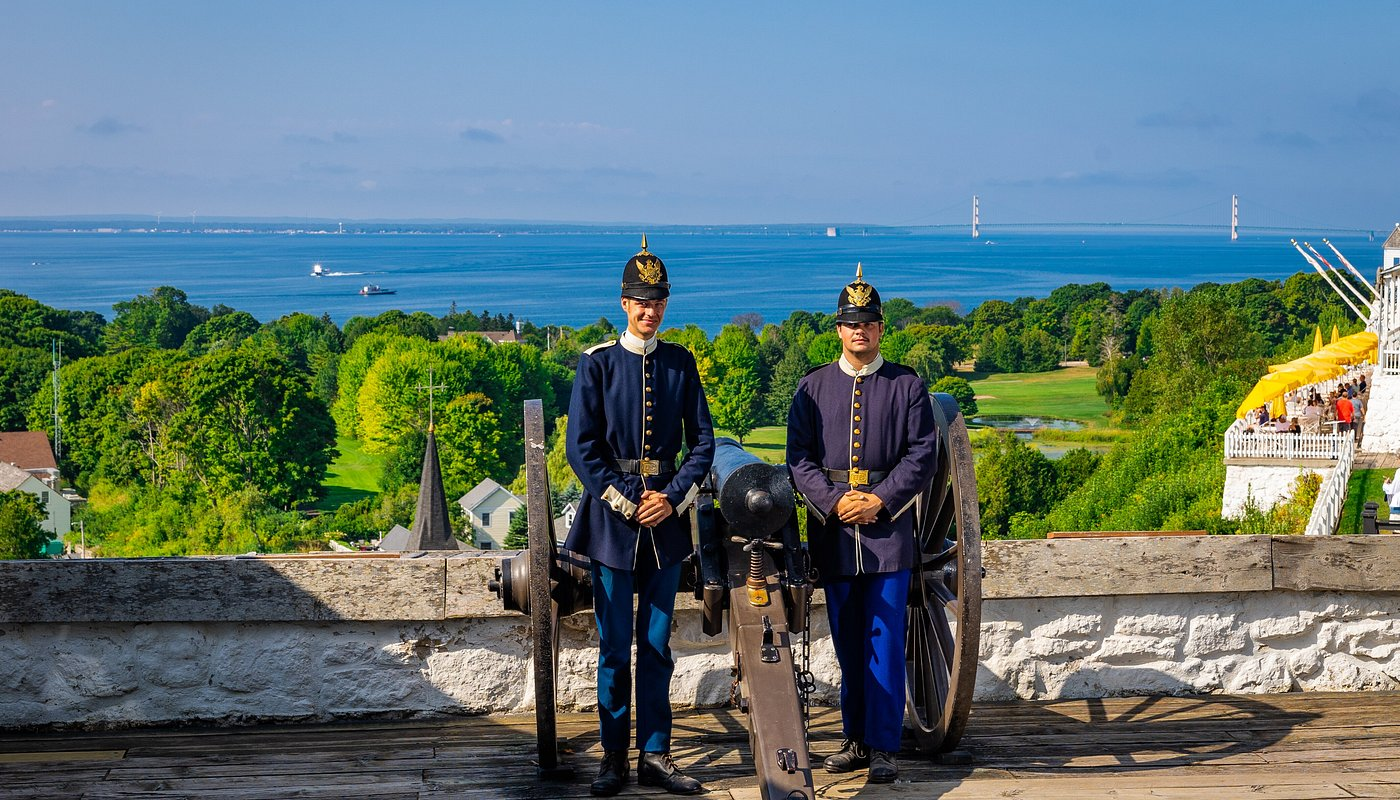The island was originally inhabited by the Anishinaabek people. They called the island Michilimackinac, meaning Place of the Great Turtle, reflecting the island's shape. In the 1600s, French explorers and missionaries arrived, establishing missions and initiating the fur trade.
 The Grand Hotel, which opened in 1887, played a key role in establishing the island's reputation as a fashionable resort.
The Grand Hotel, which opened in 1887, played a key role in establishing the island's reputation as a fashionable resort.
- The Grand Hotel kitchen staffs over 100 people, who prepare and serve some 4,000 meals per day.
The car-free environment, the horse-drawn carriages preserve the island's historical character and charm. The island's reputation as the Fudge Capital of the World has led to tourists being named fudgies.
 |
| Grand Hotel |
- The first thing to do upon arriving on the island is take a carriage ride. It's the best way to get one's bearings. Simply hop on a fringed surrey and learn the history, some fun facts and a lot of tall tales.
- No cars, no horns, no sirens and no motorcycles allowed on the island. Visiting the island is stepping back in time.
- Despite the ban on cars, there is one police car, two fire trucks and one ambulance on the island.
- There are over 1,600 rooms available to tourists in hotels, resorts, B&Bs, condos, cottages and homes. Each place is unique, and ownership of many date back to the 1800s.
- The ferry ride to the island takes between 16 and 26 minutes, depending on the route and the ferry company.
- The lighthouses on Mackinac Island are the "little jewels in the crown."
Mackinac Island played a significant role in U.S. history. It became the scene of fighting during the War of 1812. British forces captured Fort Mackinac without firing a single shot. The fort is a maintained landmark today.Fort Mackinac - About 500-600 people actually live on the island year-round.
- The "c" in Mackinac is silent because the name has French roots. When the French built Fort Michilimackinac in 1715, they adapted the local Anishinaabec name to their language, incorporating a "c" that sounded like an "aw" at the end of the word. While the French spelled it with a "c," they pronounced it with an "aw" sound, which is how the name is still pronounced today, regardless of whether it's spelled "Mackinac" or "Mackinaw."
Crack in the Island - Crack in the Island is located very close to Cave of the Woods in the interior of Mackinac Island and, according to legend, was formed when the Great Spirit stomped his foot in anger at the first arrival of Europeans.





